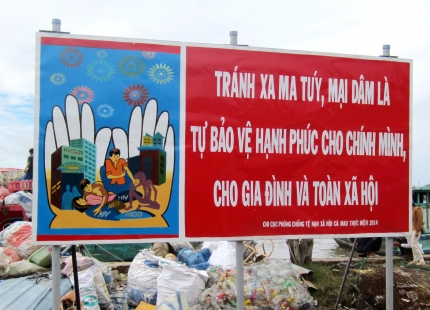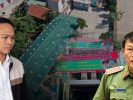
The US Department of State continues to place Vietnam on the list of countries that are needed to be monitored for human trafficking, ie level two (tier 2) in its annual report on human trafficking in the world. The report was released on the afternoon of July 1.
Compared with last year, the report of the US State Department this year still assesses that Vietnam does not meet the minimum standards for eliminating human trafficking despite the government’s considerable efforts.
In terms of efforts, the report says the Government of Vietnam has increased its convictions for traffickers, and for the first time, the Government of Vietnam is providing fully disaggregated data on trafficking cases for the US Department of State. In addition, Vietnam has also made amendments to the law on brokering Vietnamese workers abroad, abolishing brokerage fees, and expanding the scope of protection of the rights of overseas Vietnamese workers.
The Government of Vietnam is also assessed that in the past year, it has increased its budget to help victims of human trafficking and implemented awareness campaigns for vulnerable groups.
Despite this, Vietnam was judged to have failed to show an overall increase in efforts over the previous year in combating human trafficking, partly because of the COVID-19 pandemic.
According to the report, the Government of Vietnam does not conduct systematic victim identification procedures, while officials do not actively identify victims such as women and children who have been sexually assaulted. This has resulted in victims even being punished by law for what they did because they were forced to do so by their traffickers.
The US Department of State considers that the prison and fine levels in Vietnam’s law on human trafficking are quite strict, but there are still points that are not compatible with international law. For example, Articles 150 and 151 of the Criminal Code deal with human trafficking in adults and children but do not apply to children aged 16 to 17 by international standards.
In 2020, the number of convictions in human trafficking cases increased from the previous year, but the number of investigations decreased.
According to a report by Vietnam’s Ministry of Foreign Affairs and Ministry of Public Security, in 2020, Vietnam investigated 110 cases of human trafficking and arrested 144 suspects. This number in the previous year was 175 cases.
According to a report by the US Department of State, victims of human trafficking in Vietnam include people subjected to forced labor such as adults and children, women and men; women and children were forced into prostitution.
Victims of forced labor are often employed in construction, fishing, agriculture, mining, logging, and manufacturing in countries such as Taiwan, Malaysia, South Korea, Laos, and Japan. . Some people go to Europe and the UK to work in nail shops or grow cannabis.
Traffickers also target Vietnamese women and children to send them to work as prostitutes in other countries such as China, Cambodia, and Laos.
Some Vietnamese women go abroad as marriage brokers or work in restaurants, massage parlors or bars, karaoke in China, Japan, Malaysia, Saudi Arabia, Singapore, and Taiwan. They end up being forced into sexual service.
The US State Department report also revealed that there have been Vietnamese officials, mainly at the commune level, who abetted human trafficking by accepting bribes from traffickers.
Thoibao.de (Translated)


























